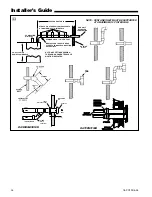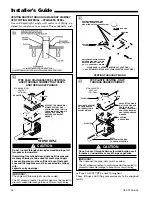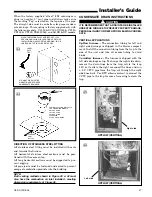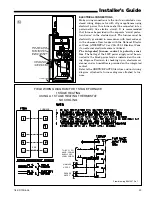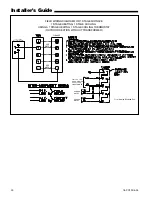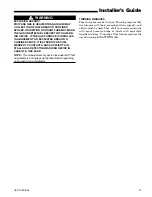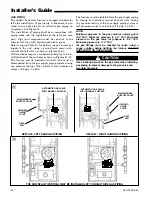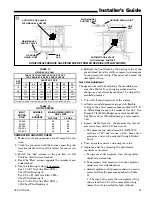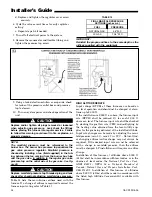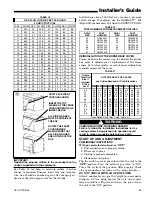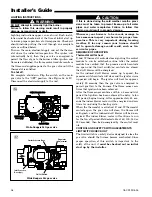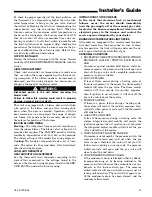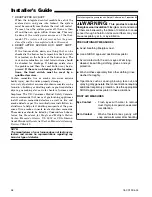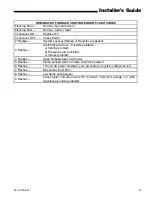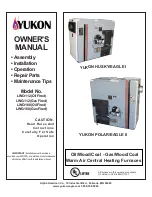
38
18-CD19D5-25
Installer’s Guide
7. RESET AFTER LOCKOUT
When the integrated control module has shut the
system down and gone into lockout, the system
must be manually reset before the unit will restart.
To reset, turn the system power off, then on, then
off and then on again within 30 seconds. This may
be done at the unit’s power source or at the ther-
mostat.
The system will not reset unless the proce-
dure off-on-off-on is completed within 30 seconds.
8. RESET AFTER BURNER BOX LIMIT SHUT-
DOWN
If the furnace shuts down, one thing that can be
checked is the burner box temperature limit switch.
It is located on the bottom of the burner box. The
vent and combustion air inlet terminations should
be checked for blockage. If blockage exists, clear
the problem and then the reset button may be de-
pressed.
If there is no blockage of the termina-
tions, the limit switch must be reset by a
qualified servicer.
Carbon monoxide, fire or smoke can cause serious
bodily injury, death, and/or property damage.
A variety of potential sources of carbon monoxide can be
found in a building or dwelling such as gas-fired clothes
dryers, gas cooking stoves, water heaters, furnaces and
fireplaces. The U.S. Consumer Product Safety Commis-
sion recommends that users of gas-burning appliances
install carbon monoxide detectors as well as fire and
smoke detectors per the manufacturers installation in-
structions to help alert dwelling occupants of the pres-
ence of fire, smoke or unsafe levels of carbon monoxide.
These devises should be listed by Underwriters Labora-
tories, Inc.
Standards for Single and Multiple Station
Carbon Monoxide Alarms, UL 2034
or CSA Interna-
tional Standard,
Residential Carbon Monoxide Alarming
Devices,
CSA 6.19
NOTE:
The manufacturer of your furnace does not test any de-
tectors and makes no representations regarding any
brand or type of detector.
The following warning complies with State of California law, Proposition 65.
▲
WARNING:
This product contains
fiberglass wool insulation!
Fiberglass dust and ceram-
ic fibers are believed by the State of California to cause
cancer through inhalation. Glasswool fibers may also
cause respiratory, skin, or eye irritation.
PRECAUTIONARY MEASURES
●
Avoid breathing fiberglass dust.
●
Use a NIOSH approved dust/mist respirator.
●
Avoid contact with the skin or eyes. Wear long-
sleeved, loose-fitting clothing, gloves, and eye
protection.
●
Wash clothes separately from other clothing: rinse
washer thoroughly.
●
Operations such as sawing, blowing, tear-out, and
spraying may generate fiber concentrations requiring
additional respiratory protection. Use the appropriate
NIOSH approved respirator in these situations.
FIRST AID MEASURES
Eye Contact -
Flush eyes with water to remove
dust. If symptoms persist, seek med-
ical attention.
Skin Contact -
Wash affected areas gently with
soap and warm water after handling.

